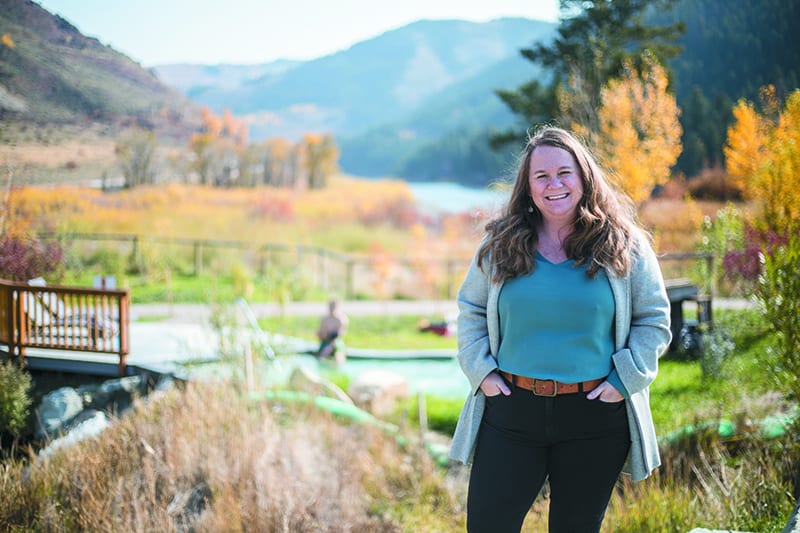Read The
Current Issue
PAIGE BRYON CURRY’S parents moved to Jackson Hole from Colorado in the early 1970s. “They were just going to come for a season,” says Curry. Except, no. Curry, along with two brothers, was born and grew up in Jackson. Curry herself left the valley for her final two years of high school—boarding school in Rhode Island—and stayed East for college. “I had an idyllic childhood in Jackson, but never thought I would end up back here,” she says. In 2008, Curry came back for a summer teaching position at Teton Science Schools. She was twenty-six at the time. “My plan was to explore Western towns after the [term] was over,” she says. That plan went similarly to her parents’ though. Curry was offered a full-time teaching position. “Everyone else in the world seemed to want to move to Jackson, and I had this opportunity to be here and make a difference,” she says. Since 2015 Curry has been making a difference as the founding executive director of Astoria Park Conservancy, a nonprofit responsible for preserving one hundred acres of riparian ecosystem on the banks of the Snake River and also the redevelopment of the historic Astoria Hot Springs, which, after almost ten years of planning, opened last August.
Q: The original Astoria Hot Springs closed in 1998; did you go there as a kid?
PBC: I grew up swimming there. It was a very special place.
Q: What does it mean to you to be such a part of bringing it back?
PBC: Mostly it gives me goose bumps. I’m really honored. One thing I heard over and over was that this isn’t the kind of project that comes around very often. There are very few pieces of our cultural fabric in Jackson Hole that we’ve lost that we have the opportunity to bring back and reinvent for a new era.
Q: Astoria Hot Springs’ earliest soakers were Native Americans. In 1961, structured pools were built and an RV park followed. What does Astoria’s new era look like?
PBC: The anchor is conservation. There were over 200,000 square feet of development planned for this area, which isn’t able to support that type of development. We saved one hundred acres from that. Five acres are the hot springs pools that we see as places for people of all backgrounds to connect. The other ninety-plus acres show that it is possible to protect natural resources, but also provide public access. That’s an important message today.
Q: Why is that an important message?
PBC: There’s a tension I have seen: People ask, what’s the good of protecting spaces in the outdoors if people aren’t inspired by them? I’m not a proponent that every single acre should have public access, but there is a balance where you can create spaces that inspire and educate the next generation of conservationists.
Q: What inspires you about the land conserved by Astoria Park?
PBC: Its location between the [Bridger-Teton National Forest] and an elk feed ground makes it a critical migration corridor in winter; it’s also critical winter habitat for birds, insects, and other animals because of its geothermally influenced ponds, which have water that can be accessed all winter.
Q: Do you have stand-out memories of Astoria Hot Springs from your childhood?
PBC: When Astoria was open before, it was really seen as the great equalizer in our community. Everyone soaked there, from cowboys to raft guides, ranchers, and families. I’d meet people from all parts of the community. I think this—connecting people from different backgrounds—is so much more important now than even twenty years ago, and my dream is for the new Astoria to do this. JH
—Interview by Lila Edythe





